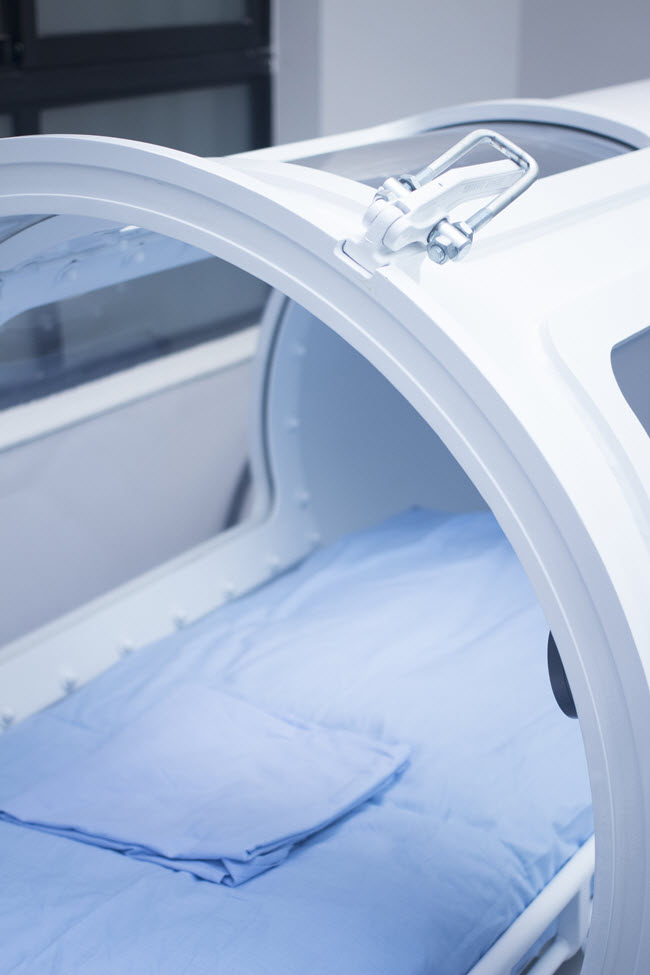New Applications for High Pressure Chambers Build Demand for RNs
Nurses in Hyperbaric Medicine: Curing Much More Than Divers’ “Bends”
One of the most challenging and intimidating fields of nursing is that of Hyperbaric Nursing or Hyperbaric Medicine. Nurses perform duties in a hyperbaric chamber, essentially a decompression chamber. When in use it simulates a deep-water dive—to about 165 feet—but relieves the symptoms of over a dozen medical conditions, including the most commonly associated with a hyperbaric chamber: decompression sickness. This treatment is not without risks, which is why it is important trained professionals help consumers safely use these devices.

Nurses Challenged By Hyperbaric Demands
Hyperbaric Nursing presents professionals with a number of unique challenges:
- Decompression chambers do not exist everywhere. According to some estimates there may be close to 500, with new chambers being added all the time. But nurses must go where the chambers are located.
- Hyperbaric chambers stay very busy, especially as new medical conditions respond to high-pressure oxygen treatment.
- There are work-related risks associated with this job. Oxygen is extremely flammable and fires are not uncommon. Also, some nurses experience varying physical side effects from continual exposure to highly pressurized treatments. In rare instances they may experience “the bends” themselves if not careful.
- Some hyperbaric chambers are independent operations, may employ nurses and other medical personnel, but may not adhere to strict regulations such as those imposed on chambers associated with hospitals. This may potentially endanger employees and clients.
Decompression chambers relieve divers’ “bends” and carbon monoxide poisoning. These are the most common afflictions associated with a hyperbaric chamber. A more complex assortment of medical ailments that also benefit from high-pressure oxygen treatments include various types of wounds, anemia, some types of burns, and certain traumatic injuries. Nurses then are exposed to a wide range of patient medical complaints, a diverse population of patient, as well as a medically unique work place that exerts uncommon forces. This, of course, attracts a certain type of professional.
Nurse Role
Hyperbaric chambers may be designed to hold multiple patients or a solitary patient. Nursing paradigms remain the same in terms of initial patient assessment, patient education, and collaboration with other medical personnel, and plan of treatment and follow-up care. The additional roles imposed by the setting include easing patient anxiety about the decompression treatment and preparing patients for lengthy periods in a closed chamber. In many cases patients must undergo many decompression treatments for certain medical conditions to respond. Furthermore, each session may last from two to six hours.
Degrees and Credentials
Hyperbaric Nurses are in high demand and that is expected to continue to escalate. The chambers employ a crew of various health professionals, and nurses with LPN and RN licenses may find work. Currently no formal nursing degree exists for hyperbaric medicine nursing, but industry certifications are indicated for advanced nurses with work experience in a decompression chamber.
The National Board of Diving and Hyperbaric Medical Technology recommends the Certified Hyperbaric Registered Nurse credential. Obviously candidates are required to have an RN license, but they are also expected to have at least two years work experience in a hyperbaric medical environment, work experience in critical care, and have completed a hyperbaric training course.
Hyperbaric Nursing is a growing field. Professionals with a zest for challenging work and cutting edge technology may find the field very rewarding.
Get Your Free Information on Nursing & Healthcare Programs

